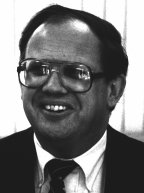

The Laboratory was founded in the midst of World War II - a war that presented a scientific challenge to the United States - to provide weapons based on advanced concepts and new discoveries that would help defeat the enemy.
In the years between World War I and World War II, the United States had risen to pre-eminence in nuclear physics. This was due in part to the immigration of scientists from Europe and in part to the native ingenuity of American physicists. These scientists joined forces to invent the tools of nuclear physics - cyclotrons and other particle accelerators - and many new substances using these tools, including biomedically useful radioisotopes like carbon-14.
The technological contributions these scientists made to the war effort included nuclear weapons, radar and rockets. Nuclear physics was particularly important in the development of the atomic bomb.
Scientists in Nazi Germany discovered nuclear fission in late 1938. Refugee scientists Leo Szilard, Edward Teller and Eugene Wigner feared that the energy released in nuclear fission might be used in bombs by the Germans. They persuaded Albert Einstein, America's most famous physicist, to warn President Franklin Roosevelt of this danger in an Aug. 2, 1939, letter. In response to the warning, Roosevelt ordered increased research in nuclear physics.
Under the auspices of National Bureau of Standards chief Lyman Briggs, small research programs had begun in 1939 at the Naval Research Laboratory in Washington, where physicist Philip Abelson explored uranium isotope separation. At Columbia University Italian nuclear physicist Enrico Fermi built prototype nuclear reactors using various configurations of graphite and uranium.
Vannevar Bush, director of the Carnegie Institution of Washington, organized the National Defense Research Committee in 1940 to mobilize the United States' scientific resources in support of the war effort.
New laboratories were created, including the Radiation Laboratory at the Massachusetts Institute of Technology, which developed radar, and the Underwater Sound Laboratory at San Diego, which developed sonar.
The NDRC also took over the uranium project, as Briggs' program in nuclear physics was called. In 1940, Bush and Roosevelt created the Office of Scientific Research and Development to expand these efforts.
The uranium project had not made much progress by the summer of 1941, when word came from Britain of calculations by Otto Frisch and Fritz Peierls that showed that a very small amount of the fissionable isotope of uranium - uranium 235 - could produce an explosion equivalent to that of several thousand tons of TNT.
The National Academy of Sciences proposed an all-out effort to build nuclear weapons. Bush created a special committee, the S-1 Committee, to guide the effort. No sooner was this decision made than the Japanese bombed Pearl Harbor on Dec. 7, 1941. The war had begun for the United States.
At the University of Chicago's Metallurgical Laboratory, the University of California's Radiation Laboratory and Columbia University's physics department, efforts to prepare the nuclear materials for a weapon were accelerated - uranium 235 had to be separated from uranium ore and plutonium made by neutron bombardment of natural uranium. Beginning in 1942, huge plants were built at Oak Ridge (Site X) in Tennessee and Hanford (Site W) outside of Richland, Wash., to produce these materials, based on technologies that were only in the laboratory testing stage.
However, it would be another year before a laboratory was designated to design a bomb that would use these materials.

About the writer: Robert Seidel, former group leader for the Bradbury Science Museum, is now a staff member in the Center for National Security Studies (CNSS).
He is a science historian and co-author with John Heilbron of "Lawrence and His Laboratory" and volume one of "A History of the Lawrence Berkeley Laboratory" (University of California Press, 1990).
He contributed to the forthcoming history of wartime Los Alamos, "Critical Assembly," by Lillian Hoddeson and others. He has written articles on the Department of Energy's national laboratories, military research and development, and the history of nuclear physics.
Next installment: A summer conference of theoretical physicists at the University of California scopes out the problem of designing the atomic bomb, and conceives of an even more awesome weapon.